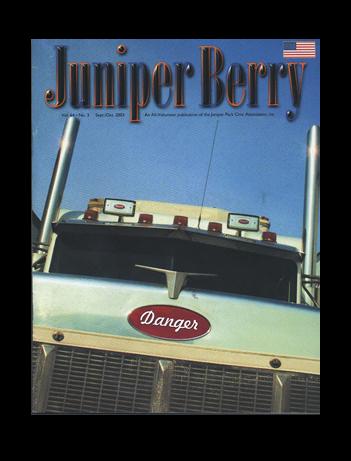(The following article is reprinted from Transportation Alternatives. It tells a comprehensive story about the negative impact of trucks on our NYC life and offers possible ways to combat the problem. Residential areas of Maspeth and Middle Village are being overrun by huge tractor trailers that are ruining our roadways and contributing to a deteriorating quality of life.)
Before interstate highways, New York City trains ran from NYC docks, warehouses and factories to the rest of the country. But today, NYC is the most truck-dependent part of the country. An astounding 90% of the cargo entering the city is carried by trucks, compared to under 50% for the U.S. as a whole. This is sadly ironic, since NYC's density, crowded streets and fragile infrastructure make it especially unsuited to heavy truck use. A March 1997 study by Community Consulting Services found that trucks inflict 96% of the damage caused by vehicles to NYC roads and bridges, an astounding $1.7 billion in annual damages.
Trucks are crucial to the city's economic health and everyday function. That is why T.A. advocates for sensible parking policies that open up curb space for truckers instead of forcing them to double park and suffer punitive fines. Still, the number of trucks must be reduced and truckers must pay a fairer share of the infrastructure repair that this city needs.
In addition to better enforcing existing truck laws, the City and regional transportation agencies should take the following steps to reduce truck use.
1. Fully fund the “Rail Bridge” ferry float between New Jersey and Brooklyn. The rail float currently carries 3,000 rail cars a year. A 2000 study by the Economic Development Corporation found that, for a modest investment, the float could take an additional 275,000 heavy truck trips off of NYC's roads.
2. Create a rail freight tunnel under the Hudson River. The $2.3 billion rail tunnel would divert 8.6 million tons of freight from truck to rail annually, amounting to one million fewer annual truck trips across the Verrazano and George Washington Bridges. This would save the NYC region $416 million annually in reduced costs from air pollution, congestion, fewer crashes and less infrastructure damage.
3. Raise truck tolls on MTA/Port Authority crossings. Heavy, 18-wheel tractor trailers are responsible for 99% of the damage to bridges. But on the MTA bridges, which most semitrucks use to cross the Hudson, truck drivers pay only a modest $17.60 toll, only five times the $3.50 E-ZPass car toll. Given the massive damage trucks inflict on bridges and the subway system, they should pay more.
T.A. Tells Council City Must Do More on Trucks
It is no secret that for years big trucks have regularly ignored sparsely marked New York City truck routes. In its most recent response to voluminous public complaints about big trucks rumbling down neighborhood streets, the City Council held a hearing on April 4 on legislation intended to reduce the problem. One council bill would require truck drivers to carry a NYC Truck Map and a written travel itinerary displaying the legal route to their destination. Another proposed council resolution would support proposed state legislation that penalizes drivers with hefty fines and points for violating truck routing rules.
However, the DOT says that the council bill is preempted by Federal law and not enforceable. Additionally, the state bill faces an uphill battle against the New York Motor Truck Association.
If the City Council and the DOT are serious about getting trucks to stay on truck routes, then they should get together with the police to develop new laws and policies that make enforcement easier and truck routes clearer. The police say that, without clearly marked truck routes, it is more difficult for them to sustain tickets in traffic court.
T.A. recommended to the City Council that the DOT and police do three things to make truck enforcement more transparent and accountable to the public:
1. The DOT should place on its Web site a detailed, downloadable, truck route map modeled on the excellent City Planning/DOT NYC Bicycle Map. The current on-line truck route map has no street names.
2. The NYPD should post the number of truck route summonses given out in each precinct on its Web site. The police department already posts detailed monthly crime statistics for each precinct.
3. The DOT should place a log of citizen complaints about trucks on its Web site and update its response. This will help the DOT, City Council, police and public see where truck complaints are coming from and what is being done to address them.




